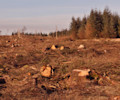The Kunming-Montreal Global Biodiversity Framework (GBF) adopted at the COP15 in 2022 established the overarching commitment to halt and reverse biodiversity loss. To accomplish this, the framework sets 23 targets for 2030 and four long-term goals for 2050. In terms of mobilising finance for biodiversity, Target 19 sets a target of US $200 billion per year from all sources, including US $30 billion from international capital to developing nations.
A focus of COP16 is for governments to provide more clarity on how they will implement these targets. Countries are expected to submit updates to their National Biodiversity Strategies and Action Plans (NBSAPs). This may directly impact private and public capital allocation, as governments continue to address the material risks of biodiversity loss.
For instance, GBF Target 18 seeks to reduce harmful financial incentives whilst increasing positive ones for biodiversity. In line with this, investors representing US $7.3 trillion in combined assets have raised concerns about the US $540 billion per year in agricultural subsidies provided by governments. The majority of which are price distorting and environmentally harmful, with damage to nature estimations at US $4-6 trillion from subsidy regimes per year. As a result, investors have urged G20 Finance Ministers to realign agricultural subsidies with nature and climate goals.
TNFD could follow the TCFD pathway to mandatory disclosures more rapidly
It is difficult to manage what is not measured, which is why nature-related reporting is a crucial component in the strategy to halt and reverse biodiversity loss. Target 15 of the Global Biodiversity Framework calls on the largest companies to “regularly monitor, assess, and transparently disclose their risks, dependencies and impacts on biodiversity”. Investors play a crucial role in its implementation by engaging companies and policymakers to promote biodiversity impact measurement and disclosure.
Under the Taskforce on Nature-related Financial Disclosures (TNFD), many global companies have already committed to disclose their material nature-related impacts and dependencies to investors and other stakeholders. Given the clear alignment between the TNFD and TCFD frameworks, it is likely we will see a push for more mandatory nature-related disclosures, following the path of the TCFD, where climate-related disclosures are now mandatory in 103 jurisdictions. In its first seven months, TNFD has already surpassed 400 adopters, signalling a strong commitment to align disclosures with TNFD Recommendations.
Nature and climate action are inextricably linked
Investors understand that both climate change and nature loss can have impacts on returns, especially over the long term. Therefore, mitigating and adapting to climate-related risks and seizing low-carbon opportunities are becoming standard practices in the investment community. The most sophisticated investors recognise that climate and nature are intertwined. Therefore, halting biodiversity loss is a must, rather than a nice-to-have, for effective climate action. Most sectors depend on natural resources and services, contributing an estimated US $44 trillion in economic value.
What's more, the food and agriculture sector is particularly nature-dependent, while also being a significant driver of biodiversity loss. For instance, the leading cause of terrestrial biodiversity decline is land-use change, mostly driven by agricultural expansion (over 33% of land on earth is used to grow crops or livestock). Moreover, marine biodiversity is being directly overexploited, with 55% of the ocean subjected to industrial fishing, and biodiverse coastal ecosystems are increasingly being converted for aquaculture. And like climate change, nature loss also requires a holistic approach with a wide range of solutions and actors at all levels.
Latin America is a biodiversity hotspot
This year COP16 will take place in Colombia, which is home to around 10% of the Amazon rainforest, bringing more attention to the rich biodiversity of the region. UNEP estimates that around 60% of global terrestrial biodiversity is found in Latin America and the Caribbean. Nature underpins the global economy, with 50% of global GDP – and 55% of GDP in Latin America (excluding Mexico) - being highly or moderately dependent on natural ecosystems.
The agri-food sector is unique as it is highly dependent on nature, but also exerts significant pressure on ecosystems and is a major driver of climate change and biodiversity loss. Growth of livestock production is the leading driver of deforestation, particularly in Latin America, where 70% of the land that was once forested in the Amazon is now used for growing feed crops or cattle pasture. Protein producers are especially vulnerable to deforestation risks in their supply chains. According to the FAIRR Protein Producer Index, over 60% of these companies are classified as "high risk" for deforestation. This poses financial risks, as many countries are already beginning to implement legislation on deforestation-free commitments such as the European Union Regulation on Deforestation-free Products, as well as valuing the bioeconomy.
At COP16, FAIRR will be raising awareness of these issues and investor priorities, which continue to be important in the year ahead, particularly in the run-up to the climate COP30 hosted in Brazil next year.
FAIRR insights are written by FAIRR team members and occasionally co-authored with guest contributors. The authors write in their individual capacity and do not necessarily represent the FAIRR view.









